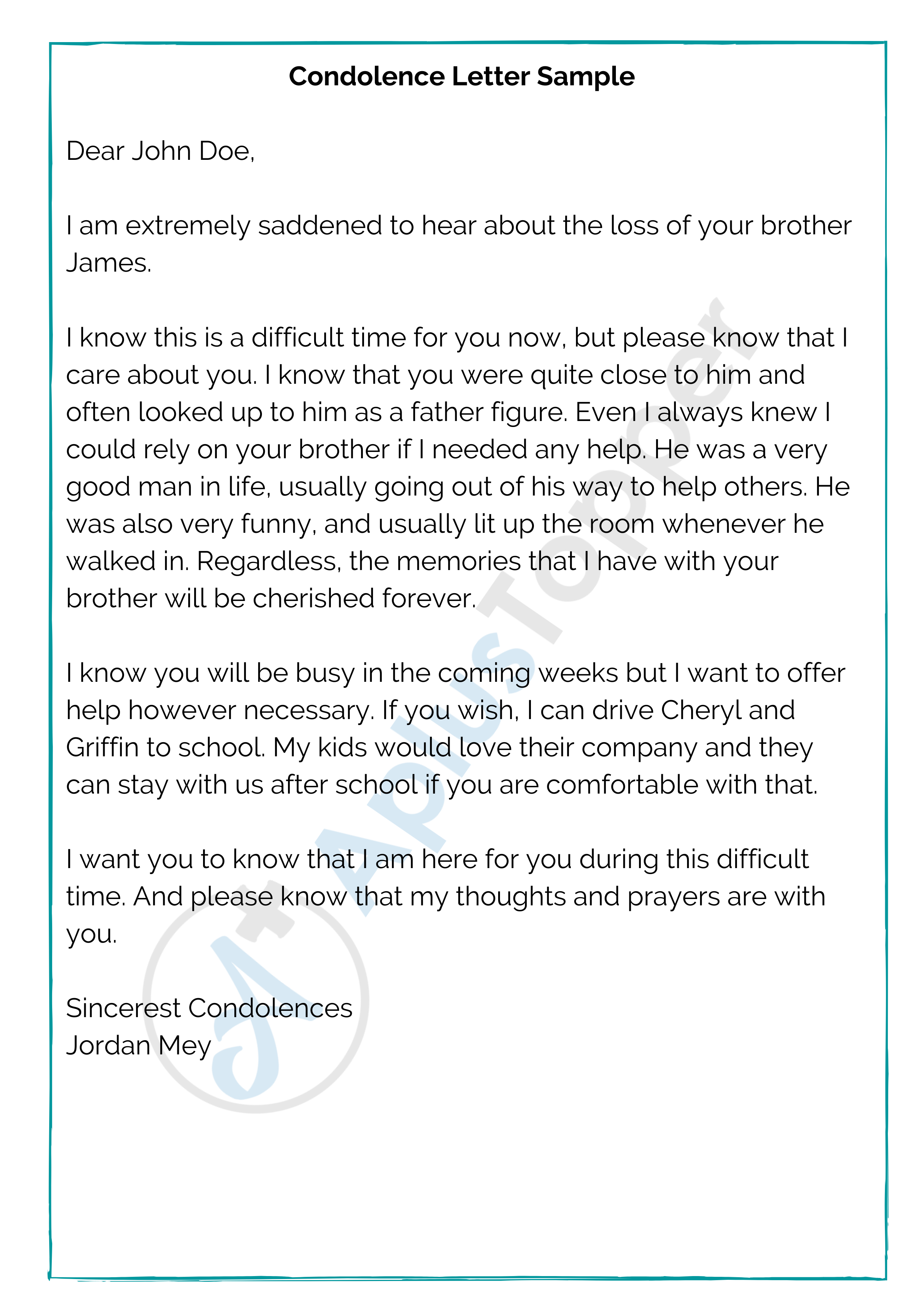Condolence Letter: What is a Condolence Letter? A condolence letter is a letter that thoughtfully expresses your sympathy for the death of a loved one. These letters are often sent to family members or close friends of the person who has expired.
Get Other Types of Letter Writing like Formal, Informal and Different Types of Letter Writing Samples.
What is the Purpose of a Condolence Letter?
The main aim of condolence letters is to provide a source of comfort and support to the family of the deceased. This letter can provide a small source of comfort for the family of the deceased. It also gestures sympathy and substitutes itself when words are at a loss. Regardless, the family of the deceased will be going through a tough time, hence, any comfort or help is welcome. In this article, we shall take a look at the contents of a condolence letter, writing styles, formats and guidelines. We shall also explore a few sample condolence letters that cater to various scenarios.
Guidelines for Drafting a Condolence Letter
Following are a few important guidelines for drafting a condolence letter:
- The writing style can either be formal or casual – however, ensure that it expresses sympathy with the deceased’s family members
- The letter can also be handwritten if required.
- Refer to the deceased by their name
- In the letter, state a few special qualities of the deceased
- Also try to include your memories with the deceased
- If feasible, try to offer help – monetary or otherwise
- Try to end the letter with an expression of sympathy or a thoughtful wish
Condolence Letter Template / Format
Following is a general template of a condolence letter. Feel free to alter or edit the template as per your requirements.
Condolence Letter Template Dear (name), Body of the letter: (Acknowledge the loss and ensure that you refer to the deceased by their name. The next paragraph must express your sympathies. Try to avoid such things as “God’s plan/fate” etc. Try to elaborate on a few special qualities of the deceased individual. Additionally, include a few memories of the deceased Your letter must also remind the bereaved of their strengths. Try to offer help if any way possible. End the letter with an expression of sympathy or a thoughtful wish.) Signature (Name) |
Condolence Letter Sample
Following is a sample of a condolence letter:
Condolence Letter Sample Dear John Doe, I am extremely saddened to hear about the loss of your brother James. I know this is a difficult time for you now, but please know that I care about you. I know that you were quite close to him and often looked up to him as a father figure. Even I always knew I could rely on your brother if I needed any help. He was a very good man in life, usually going out of his way to help others. He was also very funny, and usually lit up the room whenever he walked in. Regardless, the memories that I have with your brother will be cherished forever. I know you will be busy the coming weeks but I want to offer help however necessary. If you wish, I can drive Cheryl and Griffin to school. My kids would love their company and they can stay with us after school if you are comfortable with that. I want you to know that I am here for you during this difficult time. And please know that my thoughts and prayers are with you. Sincerest Condolences Jordan Mey |

FAQ’s on Condolence Letter
Question 1.
What is a Condolence Letter?
Answer:
A condolence letter is a letter that is addressed to family members or close friends of the person who has expired. It usually expresses sympathies for the death of a loved one.
Question 2.
What is the Purpose of a Condolence Letter?
Answer:
The primary goal of a condolence letter is to provide comfort and support to the family of the deceased. Moreover, it gestures sympathy and substitutes itself when we find ourselves at a loss for words.
Question 3.
What are the guidelines for writing a condolence letter?
Answer:
A condolence letter can either be formal or informal. Furthermore, it can also be handwritten to make it more personal. When writing the letter, address the deceased by their name. Also, try to mention a few special qualities of the deceased and any cherished memories that you have associated with the deceased. If possible, try to offer help of any kind. Lastly, end the letter with a sincere expression of sympathy or a thoughtful wish.
Visit AplusTopper to explore more samples of Condolence Letter. Alternatively, you can also find other helpful resources and educational materials for your upcoming exams.
